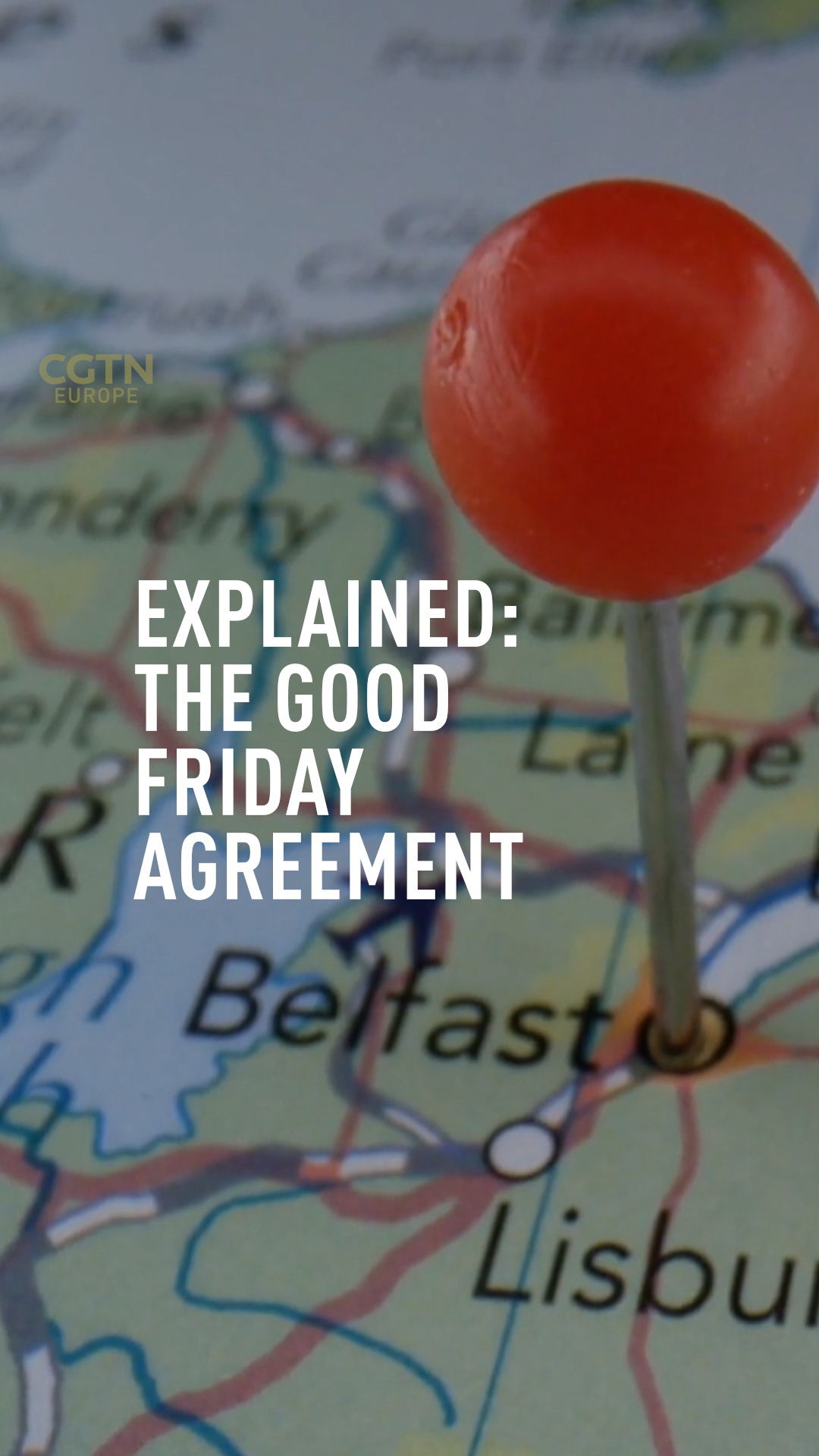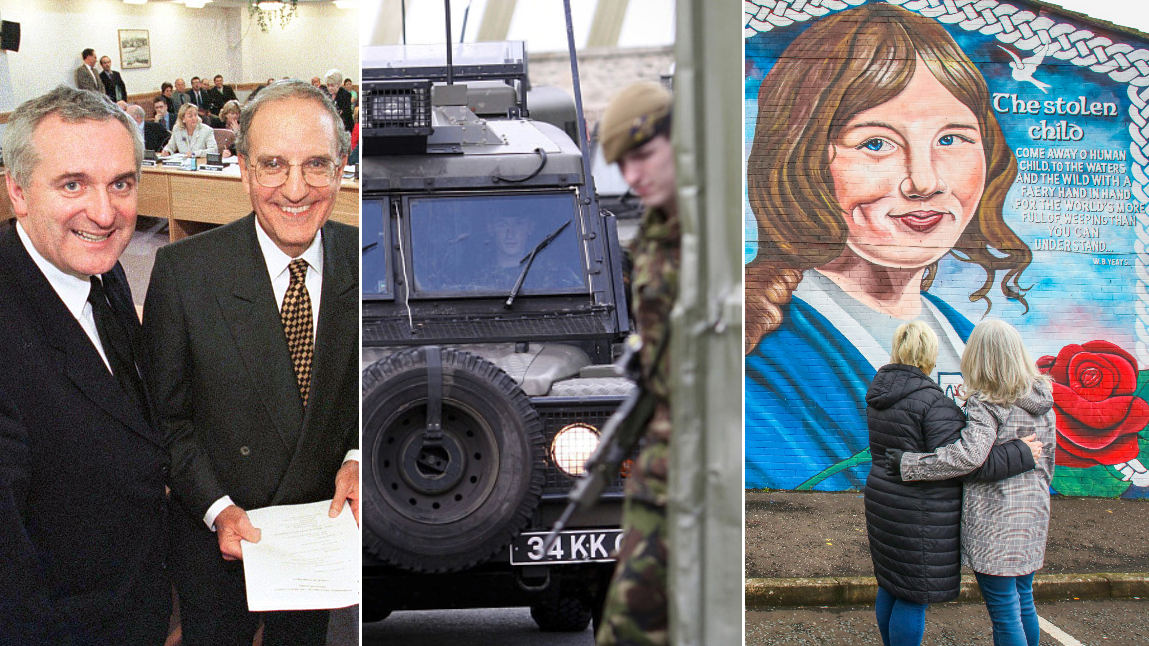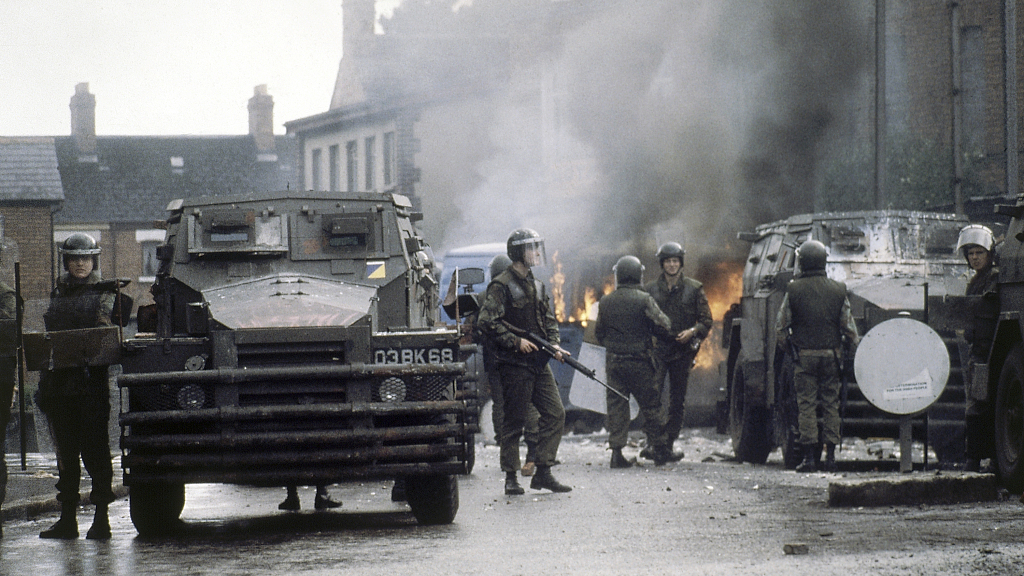03:55

The signing of the Good Friday Agreement brought an end to 30 years of bitter sectarian conflict.
It was agreed by both nationalist and unionist communities, and signed by UK Prime Minister Tony Blair and Irish Taoiseach Bertie Ahern. The U.S. played a big role, with Senator George Mitchell chairing the talks, which could have fallen apart right up to the deadline that had been set for the Easter weekend.
Speaking at a recent reception in Belfast, Ahern was full of praise for what had been achieved and hopeful for the future.
"I think we did something special 25 years ago. I agree with everyone who has said that it was not perfect, but it was substantial. Let's hope it continues to be that way and even more substantial in the future."
READ MORE
Türkiye prepares for momentous elections
Climate changes forces Loggerhead turtles to migrate
World participates in Earth Hour – but what is it?
Northern Ireland was created when the rest of Ireland became an independent nation from British rule in 1921.
On one side nationalists wanted a united Ireland while unionists wanted to remain part of the United Kingdom. The conflict was also split down religious lines between Catholics and Protestants.
Attacks by paramilitary groups like the Irish Republican Army (IRA), Ulster Defence Association (UDF) and the Ulster Volunteer Force (UVF) ravaged communities and the British army was sent to Northern Ireland. This led to further escalation. In the city of Derry in 1972, British soldiers shot 26 unarmed civilians during a civil rights march, killing 13. It became known as Bloody Sunday.
More than 3,500 people were killed in 'The Troubles', between the late 1960s and the signing of the Good Friday Agreement on April 10, 1998.

Images over 25 years: Irish PM Bertie Ahern and US Senator George Mitchell (1998), British troops in South Armagh (2007) and a tribute to a girl killed in 1981 (2023)./ CFP and Paul Faith/AFP
Images over 25 years: Irish PM Bertie Ahern and US Senator George Mitchell (1998), British troops in South Armagh (2007) and a tribute to a girl killed in 1981 (2023)./ CFP and Paul Faith/AFP
Belfast based historian Sean Brennan told CGTN why things had changed to allow the talks to happen.
"The 1990s were a very important period in Irish history because Ireland was beginning to make its presence felt within the European Union," Brennan said. "It was transforming relationships with the UK, at that European level.
"But also in the 1990s, we tend to forget that the cold war ended and there was a whole new global initiative to build peace in areas that had long established violent episodes."
One of those directly involved in the violence was Billy Hutchinson, who was part of the UVF, a Pro-British Union paramilitary group.
Now head of the Progressive Unionist Party, he spoke to CGTN in his office on the Shankill Road in Belfast, and was candid about the role he played in The Troubles as a young man.
"Our job was to terrorize Catholics because of what the IRA was doing. It would have been a whole load of actions. It would have been bombs, it would have been shootings, burning cars, that type of thing."

British troops surround a Belfast police station in 1979./ CFP
British troops surround a Belfast police station in 1979./ CFP
In 1975, Hutchinson was sent to prison for his role in the murder of two Catholic men Michael Loughran and Edward Morgan. Later, he played a key role in the Good Friday talks, helping to persuade pro-union paramilitaries to be part of the process.
"I feel proud that I was involved in it but I was only a cog in the wheel," Hutchinson said. "But our involvement in it was important. It took a lot of people to agree to get where we are today and this society is a different society than it was prior to 1994."
For Nationalists, it was an equally hard task. There were huge debates over allowing the Sinn Fein party to be part of the discussions because of their ties to the IRA, who had taken their terror campaign out of Northern Ireland to the UK mainland.
There had been peace talks and ceasefires before the meetings that led to the Good Friday Agreement. CGTN met with the then President of Sinn Fein, Gerry Adams on the Falls Road in Belfast during the Easter parade. He explained the difference in 1998 was that they were given a seat at the table.
"The talks were multi-party, Sinn Fein was there, and we did a huge amount of work in the preceding two decades," Adams said. "All of that came to gather fortuitously around Good Friday.
"The IRA was an organisation of armed citizens; it was an army of political soldiers. It took its own decisions and when it had the opportunity to embrace peaceful methods, which it hadn't before, it then took them bravely and courageously."
After getting everyone to agree to sit in the same room, the deal laid out allowed both sides in the conflict to continue to seek their goals, but by political, not paramilitary means.
Armed groups would dispose of their weapons, and the UK would scale back its military presence in Northern Ireland. It also established the Northern Ireland Assembly at Stormont.
A quarter of a century on from the signing of the Good Friday Agreement, Northern Ireland is undoubtedly a better place because of it. But there are still political problems. Stormont isn't currently in session because of the latest political impasse.
The fact that the sides have switched from guns and bombs to the ballot box means the Good Friday Agreement was a key turning point in the history of the region.
Subscribe to Storyboard: A weekly newsletter bringing you the best of CGTN every Friday